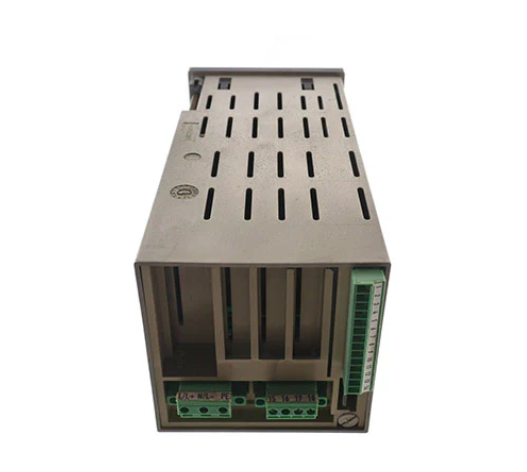Current situation and future trend of geothermal energy development and utilization in China
Geothermal energy is a green, low-carbon, recyclable renewable energy, with large reserves, wide distribution, clean environmental protection, stable and reliable. China is rich in geothermal resources, the market potential is huge, and the development prospect is broad. The development and utilization of geothermal energy is not only of great significance to the adjustment of energy structure, energy conservation and emission reduction, and the improvement of the environment, but also has a significant pulling effect on the cultivation of emerging industries, the promotion of new urbanization construction, and the increase of employment. Geothermal energy is usually divided into shallow geothermal energy, hydrothermal geothermal energy and dry thermal rock geothermal energy.
Resource situation
Shallow geothermal energy.
Hydrothermal geothermal resources. Hydrothermal geothermal resources in China are mainly medium and low temperature, supplemented by high temperature. Controlled by factors such as structure, magmatic activity, stratigraphic lithology and hydrogeological conditions, the distribution of hydrothermal geothermal resources has obvious regularity and zonality, and can be divided into sedimentary basin type and uplift mountain type geothermal resources according to tectonic origin.
Uplift mountain type medium and low temperature geothermal resources. It is mainly distributed in mountainous and hilly areas such as the southeast coast, Jiaodong and Liaodong Peninsula. Upland high temperature geothermal resources are mainly distributed in Taiwan, South Tibet, west Yunnan, west Sichuan and other regions. Because China is located in the intersection of the western Pacific island arc plate marginal tropical zone and the Mediterran-Himalayan land-continental collision plate marginal tropical zone, controlled by tectonic activities, this area is pregnant with a large number of hydrothermal activities, and is the most important high-temperature hot spring intensive zone in China. The annual recoverable capacity of hydrothermal geothermal resources in Southwest China is equivalent to 15.3 million tons of standard coal, and the power generation potential of high-temperature geothermal resources is 7.12 million kW.
Hot and dry rock resources. Hot dry rock exists in the interior of the earth, but the resources of hot dry rock with potential development are distributed in the new volcanic active areas, thin crust areas and other plate or tectonic body margins. The amount of dry hot rock resources within 3 ~ 10km underground in China's land area is equivalent to 856 trillion t of standard coal. According to the international standard of hot and dry rock, 2% of it is considered as recoverable resources, which is about 4000 times the total energy consumption of the country in 2015. In view of the difficulty of exploration and development of geothermal energy in hot dry rock and the trend of technological development, geothermal energy in hot dry rock buried in shallow 5500 meters will be the key field of exploration and development of geothermal energy in China in the next 15 to 30 years.

Development status
Development of shallow geothermal energy
China's shallow geothermal energy utilization started at the end of the 20th century. With the Green Olympics, energy conservation, emission reduction and climate change actions, shallow geothermal energy utilization has entered a stage of rapid development, and the scale of shallow geothermal energy utilization has ranked first in the world since 2015. During the "13th Five-Year Plan" period, China has built a number of significant shallow geothermal energy development and utilization projects, and the maturity and reliability of shallow geothermal energy technology has been verified and recognized.
The Beijing International Horticultural Expo uses deep geothermal + shallow geothermal + water storage + boiler peaking methods to provide heating and cooling services for 290,000 square meters of buildings; Using ground source heat pump + deep geothermal + water storage + auxiliary cold and heat source, Beijing City sub-central Office area takes the lead in creating a "near zero carbon emission zone" demonstration project through heat pump technology, providing summer cooling, winter heating and domestic hot water for 2.37 million square meters of buildings; As an important part of "Green Airport", the ground source heat pump system of Beijing Daxing International Airport provides cold and hot energy for 2.57 million square meters of buildings in Daxing Airport.
By the end of 2019, the scale of shallow geothermal energy development and utilization in China was 840 million square meters, mainly distributed in the urban areas of Beijing, Tianjin, Hebei, Liaoning, Shandong, Hubei, Jiangsu, Shanghai and other provinces.
The annual utilization energy of geothermal direct utilization ranks first in the world, accounting for 29.7% of the world; The equipment capacity of geothermal direct utilization ranks first in the world, accounting for 25.4% of the world; The annual utilization of shallow geothermal energy by ground source heat pump ranks first in the world, accounting for 30.9% of the world; The annual utilization of geothermal heating ranks first in the world, accounting for 38.2% of the world. Development of hydrothermal geothermal energy.
Development of hydrothermal geothermal energy
Hydrothermal geothermal energy utilization is the main force of geothermal industry in China. The development and utilization of hydrothermal geothermal heating in China has a history of thousands of years. After the reform and opening up, especially in recent years, the development and utilization of hydrothermal geothermal heating have made great progress in scale, depth and breadth. In the past decade, China's direct utilization of hydrothermal geothermal energy has grown at an average annual rate of 10%, ranking first in the world for many years in a row. The direct utilization of geothermal energy in China is mainly heating, followed by health care, breeding and so on. According to incomplete statistics, as of the end of 2017, the national hydrothermal geothermal heating construction area exceeded 150 million square meters, of which Shandong, Hebei and Henan have enjoyed rapid growth.
China's geothermal power generation began in the 1970s, and in December 1970, the first medium-low temperature geothermal power generator set was successfully generated in Dengwu, Fengshun County, Guangdong Province. At present, the total installed capacity of geothermal power generation in China has been 53.45MW, the current operating capacity is 46.46MW, the suspended capacity is 5.79MW, and the dismantled capacity is 1.2MW.
Exploration and development of geothermal energy resources in dry hot rock
Dry hot rock geothermal energy is an important field of geothermal energy development in the future. After 20 to 40 years of exploration and research, the United States, Germany, France, Japan and other countries have made important progress in the exploration and evaluation of dry hot rock geothermal energy, heat storage transformation and power generation experiments, and accumulated certain experience. In 2012, the Ministry of Science and Technology established the National High-tech Research and Development Program (863 Program), which started the special research on hot and dry rock in China. Since 2013, the China Geological Survey and Qinghai Province have jointly promoted dry-hot rock geothermal energy exploration in key areas of Qinghai Province. In 2017, a 236-℃ dry-hot rock mass was drilled at a depth of 3,705 meters in Gonghe Basin, Qinghai Province, marking the first discovery of high-temperature dry-hot rock geothermal energy resources in sedimentary basins in China.
Development and utilization mode
The exploitation and utilization of geothermal resources can be divided into two aspects: power generation and direct utilization. High temperature geothermal resources are mainly used for power generation; Moderate and low temperature geothermal resources are mainly used directly. For shallow geothermal energy below 25 ° C, ground source heat pumps can be used for heating and cooling.
Shallow geothermal heating and cooling. Since 2015, the total annual utilization rate of shallow geothermal has ranked first in the world. In 2017, the installed capacity of ground source heat pump reached 20,000 MW, and the annual use of shallow geothermal energy and standard coal was 19 million tons. In China, the utilization of shallow geothermal energy develops rapidly, the application area is large, the utilization development degree is different in different regions, the coverage is wide, and the system types are diverse.
Direct utilization of medium and low temperature geothermal energy. The direct utilization of medium and low temperature geothermal in China is mainly in geothermal heating, medical care, hot springs, bathing and tourism, aquaculture, agricultural greenhouse planting and irrigation, industrial production, mineral water production, etc., and gradually developed geothermal resource cascade utilization technology, underground aquifer energy storage technology.

Develop and utilize 60 ~ 100℃ medium and low temperature geothermal water, hot tail water and shallow geothermal energy. Some areas with hot springs, especially in the north, are using geothermal heating to varying degrees, and good results have been achieved. The use of geothermal district heating in Tianjin has become a model in China, which is driving the development of geothermal district heating in northern China. The use of geothermal water heating, with its advantages of cleanliness, minimal air pollution, low operating costs, and high comprehensive utilization of resources, coupled with heat pump technology, has been generally valued in areas where there is a shortage of conventional energy and conditions to develop geothermal resources, and has received obvious economic and social benefits, and its development prospects are broad.
Geothermal fluid has a high temperature, contains special chemical and gas components, a small amount of bioactive ions and radioactive substances, and has obvious medical and health care effects on the function regulation of various human systems and organs. In the spa sanatoriums, the use of geothermal energy can be used for hydrotherapy, gas therapy and mud therapy. With the development of economy and the improvement of people's living standards, a number of "hot spring resorts" or "medical rehabilitation centers" integrating medical treatment, bathing, health care, entertainment and tourism have been established in many areas throughout the country.
Bathing and travel vacation. The use of geothermal water for bathing, almost throughout the provinces (districts, cities). According to incomplete statistics, more than 200 hot spring geothermal water sanatoriums have been built across the country, and 430 hot spring baths have been highlighted for medical use. Many hot springs in China are both health resorts and tourism areas. Some hot springs and boiling springs in South Tibet, west Yunnan, west Sichuan and Taiwan not only have high energy geothermal resources, but also have colorful geothermal landscapes, which attract the attention of the world. For example, Tengchong in Yunnan Province is the only well-preserved volcanic hot spring area in China, with rare volcanic and geothermal landscape and precious medical mineral water value; The Datun Volcanic hot spring area in Taiwan Province is also a hot spring spa and tourist attraction.
Farm. Beijing, Tianjin, Fujian, Guangdong and other places started earlier, and now there are 47 geothermal fields in more than 20 provinces (autonomous regions and municipalities). The main breeding tilapia, eel, turtle, green shrimp, bullfrog, ornamental fish, and fish fry winter. Due to the rapid development of hot spring aquaculture, fresh fish sell well at home and abroad, and achieve remarkable economic benefits. In addition, there are geothermal incubation birds, geothermal drying vegetables, geothermal hot water heating biogas digester and livestock bathing pool, etc., also achieved good results.
Agricultural greenhouse planting and irrigation. Geothermal energy is a compound resource, which is very suitable for off-season and off-site breeding and planting of organisms. Geothermal energy can be used to heat greenhouses, geothermal water can be used for temperate aquatic organisms, and the minerals in geothermal water can also provide nutrients for organisms. In the north of China, geothermal is mainly used for planting high-grade melons and fruits, vegetables, edible fungi, flowers, etc., in the south, mainly used for seedling cultivation.
Industrial production. At present, it is mainly used for textile printing and dyeing, washing, tanning, paper making, wood and grain drying, etc., among which the underground hot water in the hot spring area has obtained better utilization and benefits in the textile industry and chemical industry. At the same time, some geothermal water can also extract industrial raw materials, such as the Tengchong Rehai sulfur pond by panning method to obtain sulfur, Eryuan County Jiutai hot spring area to dig salt salt and natural sulfur, Taiwan since the Ming and Qing Dynasties have been in the Datun volcanic hot spring area of natural sulfur mining.
High temperature geothermal power generation. In terms of geothermal power generation, in the early 1970s, China developed medium-low temperature geothermal energy in Jiangxi, Guangdong and other places, and built a number of geothermal demonstration power stations. In 1977, China began to develop medium-high temperature geothermal energy, and the first medium-high temperature geothermal power generation demonstration station was built in Yangbajing, Xizang Province. Since then, the Yangbajing geothermal Power Station has built seven 3MW units and one 3.18 imported unit in 14 years, which will continue to operate until 2020. In September 2018, the 16MW dual-medium geothermal power generation unit of Yangyidi Thermal Power Station was connected to the grid for the first time, and it was normally operated in 2019, becoming the largest single power geothermal power unit in China so far.

Although the scale of high-temperature geothermal power generation in China lags behind the world, the ground equipment technology of high-temperature geothermal power generation has always followed, mainly because some steel mills, chemical plants and other high-temperature waste heat resources need to be utilized, so it has been developing from the perspective of waste heat power generation.
According to the different principles of ground power generation equipment, high-temperature geothermal power generation is generally divided into several categories: single-pole flash geothermal power generation technology, bipolar flash geothermal power generation technology, dual-medium power generation technology, full-flow power generation technology (that is, screw expansion engine technology), and dual-medium power generation technology is the most widely used. Among the high temperature geothermal power generation technology, the surface power generation equipment technology has a variety of solutions, and the technology is relatively mature. The most difficult technology is the exploration technology of high temperature geothermal resources. How to explore high temperature geothermal resources and how to bring underground high temperature geothermal resources to the surface is a difficult technology. High-temperature geothermal power generation is relatively easy to achieve if high-temperature geothermal fluids can be extracted from the ground.
"Geothermal energy +" multi-energy complementary. The "geothermal +" green storm characterized by "multi-energy complementarities and intelligent coupling" is quietly forming everywhere. "Geothermal energy +" a variety of clean energy complementary heating technology, innovative design of geothermal cascade utilization process, geothermal high temperature part for power generation, low temperature part for heating, improve geothermal utilization. Demonstration bases for the development and utilization of second-level geothermal energy cascades for power generation and heating have been initially established in the Beijing-Tianjin-Hebei region and southeast coastal areas.
The starting point and focus of "geothermal energy +" is to strengthen the complementary and comprehensive utilization of geothermal and other renewable energy sources on the basis of geothermal resource endowments and distribution characteristics, in accordance with local conditions, in order to achieve higher energy efficiency. Vigorously developing "geothermal energy +" is a development direction of new energy and renewable energy in the future.
Existing problem
At present, China pays little attention to the exploitation and utilization of geothermal resources, and insufficient exploration investment results in poor resource data base and lack of existing resource distribution data in China. Up to now, no unit has conducted a comprehensive and systematic exploration of China's geothermal resources, and it is impossible to evaluate the distribution of China's geothermal resources, which greatly affects the large-scale development of China's geothermal industry.
Problems in shallow geothermal development, such as well quality, pipe corrosion and scaling, as well as the cost and low efficiency of high-temperature geothermal Wells, still restrict the large-scale development of geothermal.
At present, the central and local governments have issued some financial and price encouragement policies, which have a positive guiding role in accelerating the development and utilization of shallow geothermal energy and promoting clean heating in northern China, but the policy is imperfect, the implementation is not in place, and is not sufficient. The price preference is insufficient, and the targeted and mandatory policies for geothermal development and utilization are not strong, which requires effective guidance and incentive policy support from the government.

Relevant suggestion
Research and development of key technologies and complete sets of equipment for geothermal power generation will be carried out
Carry out technical and economic feasibility studies on medium and low temperature power generation. Opportunities and challenges with respect to the technical and economic feasibility of developing geothermal resources for power generation at temperatures of 150 ° C and below; Develop a new type of working medium and low temperature geothermal power generation heat exchange fluid with low cost and high efficiency that can rapidly expand/compress. Tackle key technologies and complete sets of equipment for geothermal power generation from dry hot rock; The integration of geothermal power generation and other renewable energy development technologies will lay technical reserves for the large-scale development of geothermal power generation in the future.
Research on key technologies for efficient development of hot and dry rock was carried out
Due to the high strength and high temperature characteristics of dry hot rock, efficient and safe well formation has become the technical bottleneck of efficient development of dry hot rock, which needs to be tackled urgently. On the basis of studying the geological characteristics and resource endowment of hot and dry rock, combined with the technical characteristics of hot and dry rock development, the drilling problems of deep, high temperature, hard and unstable strata are solved.
The research on the single well pumping and recharge system was carried out
In view of the measures to enhance the heat recovery capacity of single well and the design of new single well structure, the research work to improve the heat transfer efficiency under multiple measures is carried out, such as production and injection in the same well, increasing the heat transfer area in branch Wells, heat transfer in large holes, stimulating downhole turbulent flow and strengthening convective heat transfer.
Research on geothermal drilling engineering technology to reduce cost and improve drilling efficiency was carried out
Research on pneumatic and hydraulic hammer drilling technology in hard rock of geothermal deep Wells, including the adaptation and matching of drill, drill and impactor with rock; Parameters such as air volume, air pressure, drilling fluid pump volume, bit weight, drilling rate, groundwater yield, etc.
- EMERSON
- Honeywell
- CTI
- Rolls-Royce
- General Electric
- Woodward
- Yaskawa
- xYCOM
- Motorola
- Siemens
- Rockwell
- ABB
- B&R
- HIMA
- Construction site
- electricity
- Automobile market
- PLC
- DCS
- Motor drivers
- VSD
- Implications
- cement
- CO2
- CEM
- methane
- Artificial intelligence
- Titanic
- Solar energy
- Hydrogen fuel cell
- Hydrogen and fuel cells
- Hydrogen and oxygen fuel cells
- tyre
- Chemical fiber
- dynamo
- corpuscle
- Pulp and paper
- printing
- fossil
- FANUC
- Food and beverage
- Life science
- Sewage treatment
- Personal care
- electricity
- boats
- infrastructure
- Automobile industry
- metallurgy
- Nuclear power generation
- Geothermal power generation
- Water and wastewater
- Infrastructure construction
- Mine hazard
- steel
- papermaking
- Natural gas industry
- Infrastructure construction
- Power and energy
- Rubber and plastic
- Renewable energy
- pharmacy
- mining
- Plastic industry
- Schneider
- Kongsberg
- NI
- Wind energy
- International petroleum
- International new energy network
- gas
- WATLOW
- ProSoft
- SEW
- wind
- ADVANCED
- Reliance
- YOKOGAWA
- TRICONEX
- FOXBORO
- METSO
- MAN
- Advantest
- ADVANCED
- ALSTOM
- Control Wave
- AB
- AMAT
- STUDER
- KONGSBERG
- MOTOROLA
- DANAHER MOTION
- Bently
- Galil
- EATON
- MOLEX
- Triconex
- DEIF
- B&W
- ZYGO
- Aerotech
- DANFOSS
- KOLLMORGEN
- Beijer
- Endress+Hauser
- MOOG
- KB
- Moxa
- Rexroth


Email:wang@kongjiangauto.com
























































































































